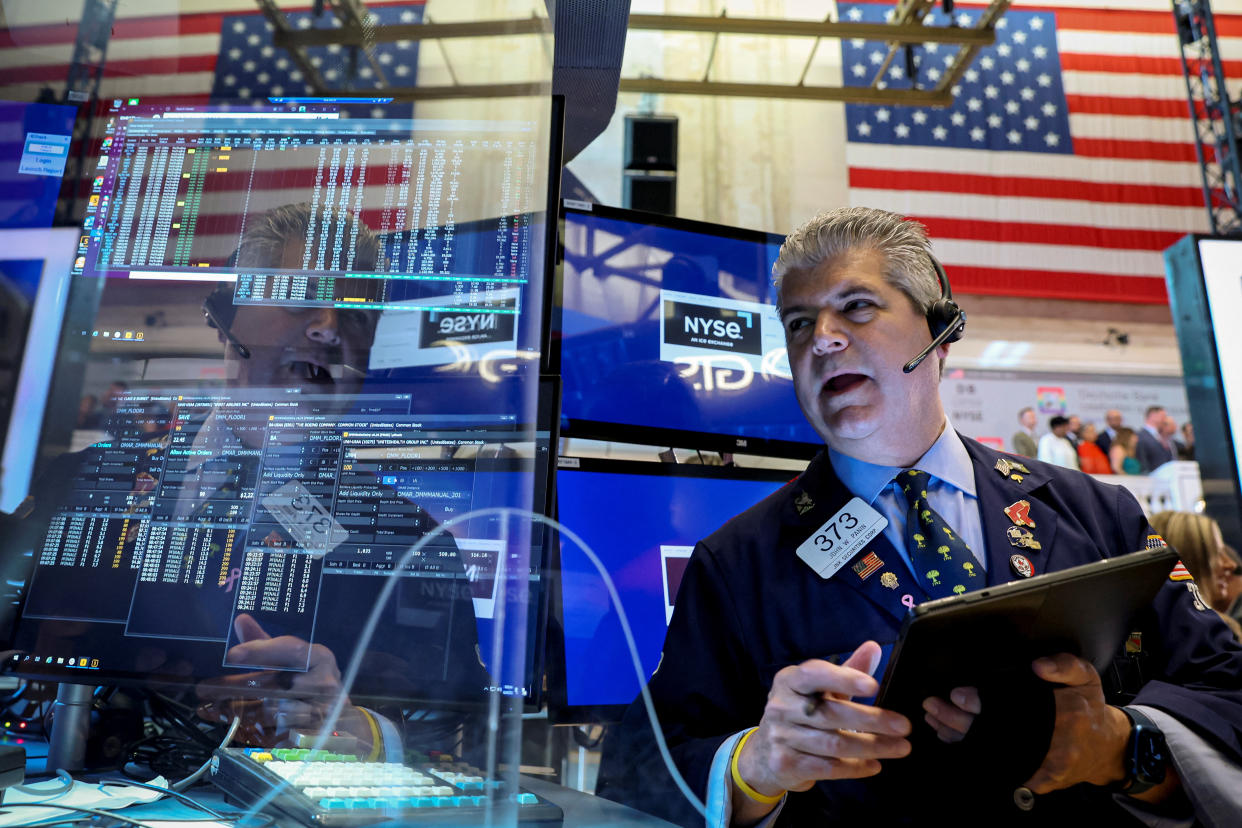Bond market 'somewhat chill' about inflation effects, macro strategist says
Inflation has dominated the headlines for some time now, especially after the U.S. Bureau of Economic Analysis released May’s personal consumption expenditures (PCE) report today, showing an increase of just 0.2% in May, the smallest incremental increase this year.
Amid growing volatility and uncertainty, Fidelity Investments Director of Global Macro Jurrien Timmer discussed his thoughts on the fixed income market’s response to record-breaking inflation.
“The bond market seems to be somewhat chill about long-term inflation effects,” Timmer told Yahoo Finance Live. He cited the five-year treasury breakeven yield and the 5-year, 5-year forward inflation expectation rate for his explanation – both of which reflect bond market participants’ view of future inflation.
“The five-year tips breakeven [inflation rate] peaked at about 3.75% in March and is about 2.75%,” said Timmer. While that number is considerably higher since March 2020 when it troughed at 0.18%, the drop of 100 basis points reflects expectations of lower growth and cooling energy prices.
The 5-year, 5-year forward inflation expectation rate — which is what investors expect 5-year inflation to be 5 years from today — is at 2.23%. “That really hasn’t budged,” reports Timmer. “It’s been around 2.25% for quite a while, even during periods of very much soaring inflation.”
Bond prices and bond yields are inversely related. When yields are surging amid high inflation, the prices of the bonds decrease to compensate for the fact that the bonds’ coupons are not as competitive with the prevailing rate of interest. Conversely, when yields drop, bond prices increase.

The latest economic data is showing that consumers are balking at soaring prices – from retail goods to housing. The University of Michigan’s index of consumer sentiment reached the lowest reading on record this month and the S&P CoreLogic Case-Shiller index showed a 20.4% rise in the cost of a home in April 2022.
Regardless of consumer sentiment, Timmer is optimistic that a recession is not on the horizon.
“The yield curve has been flattening, but it isn’t inverted yet,” Timmer justifies. U.S. Treasury yields are flat when comparing the 2-year and the 10-year yields.
Timmer also believes the markets are fairly valued, quoting a discounted cash flow (DCF) model and the forward price-to-earnings (P/E) ratio.
“I look at a very simple metric: I look at the two-year treasury yield as a proxy for where the Fed cycle goes, and that is a good input into equity valuation per the discounted cash flow (DCF) model,” Timmer outlines.
The forward P/E ratio at the peak of the pandemic was around 22-24 — that number is now 15.9, which is close to fair market value of 16, says Timmer.
Yaseen Shah is a writer at Yahoo Finance. Follow him on Twitter @yaseennshah22
Read the latest cryptocurrency and bitcoin news from Yahoo Finance
Read the latest financial and business news from Yahoo Finance
Follow Yahoo Finance on Twitter, Instagram, YouTube, Facebook, Flipboard, and LinkedIn
